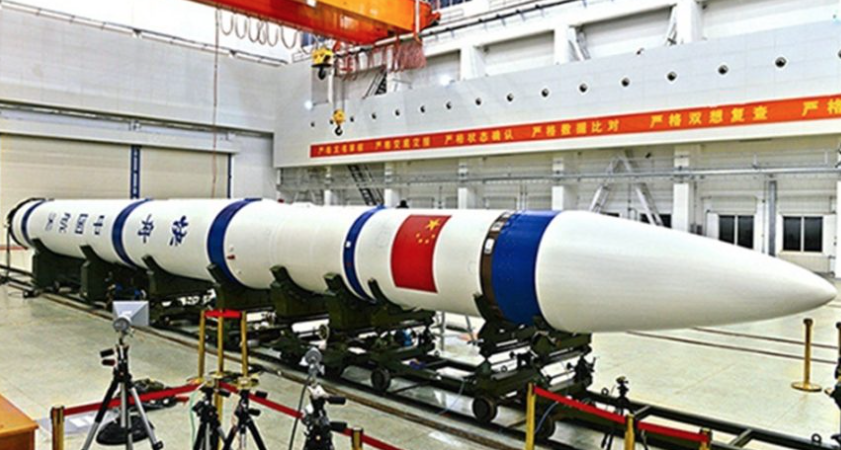Earlier this year a Chinese commercial launch-service provider, Expace, announced they would charge around $10,000 per kilogram of satellite payload which is said to be less than half the prevailing commercial price. At the end of last month the company announced their plans to launch 10 of its Kuaizhou solid-fueled rockets per year between 2017 and 2020. Expace is a creation of CASIC China Aerospace Science and Industry Corp.

China Aerospace Science and Industry Corp. (CASIC) has created a commercial-launch venture, called Expace Technology Co., to market the solid-fueled Kuaizhou rocket globally. The company expects to make 10 launches per year between 2017 and 2020. Credit: Xinhua
CASIC is China’s second commercial-launch provider after China Great Wall Industry Corp. of Beijing, which is part of the China Aerospace Science and Technology Corp. (CAST).
A recent contract has been announced that is valued at 100 million Chinese yuan, or around $14.5 million, to place three Earth observation satellites into low Earth orbit aboard a Kuaizhou 1 rocket for the government-owned Changguang Satellite Technology Co. and they will be followed by 10 other satellites to be launched on Kuaizhou rockets.
Add to that the CASIC Fourth Academy, indicated that there are letters of intent for “nearly 20” Kuaizhou rocket launches that took place at the Airshow China conference and exhibition held November 1-6 in Zhuhai, however no identifying information was provided as to who the clients are or their location.
China Great Wall markets the Long March series of medium- and heavy-lift rockets. The company has been required to sign bundled satellite-manufacturing and launch contracts with non-Chinese customers to get around a US government ban on launching US satellite parts from China.
While most builders of large telecommunications satellites in Asia, Europe, and the United States, include US components they are not allowed to be exported to China.
The word in the industry indicates that the US influence is gradually reducing as non-US manufacturers driven by the politics of autonomy in critical satellite components is now reflected in the diminished reliance on US suppliers, and the stronger US dollar will further that trend with the US' hardware becoming more expensive.
Not so with small satellites built for Earth observation (EO), technology demonstration or other missions. A higher percentage of these satellites built outside the United States are built without reliance on US components and are not bound by the US ban.
The press reports that CASIC Fourth Academy’s the latest version of the Kuaizhou rocket, can place a 1,000-kilogram satellite into a 700-kilometer sun-synchronous orbit, and 1,500 kilograms into a 400-kilometer orbit, and it is scheduled to make its first flight in 2017.
As trends go CASIC and Expace appear to have seen the same market trends that were behind development of Europe’s Vega small-satellite launcher, led by Italy, which has conducted seven successful launches. December fifth will be their eighth launch from Europe’s Guiana Space Center spaceport on the northeast coast of South America.

